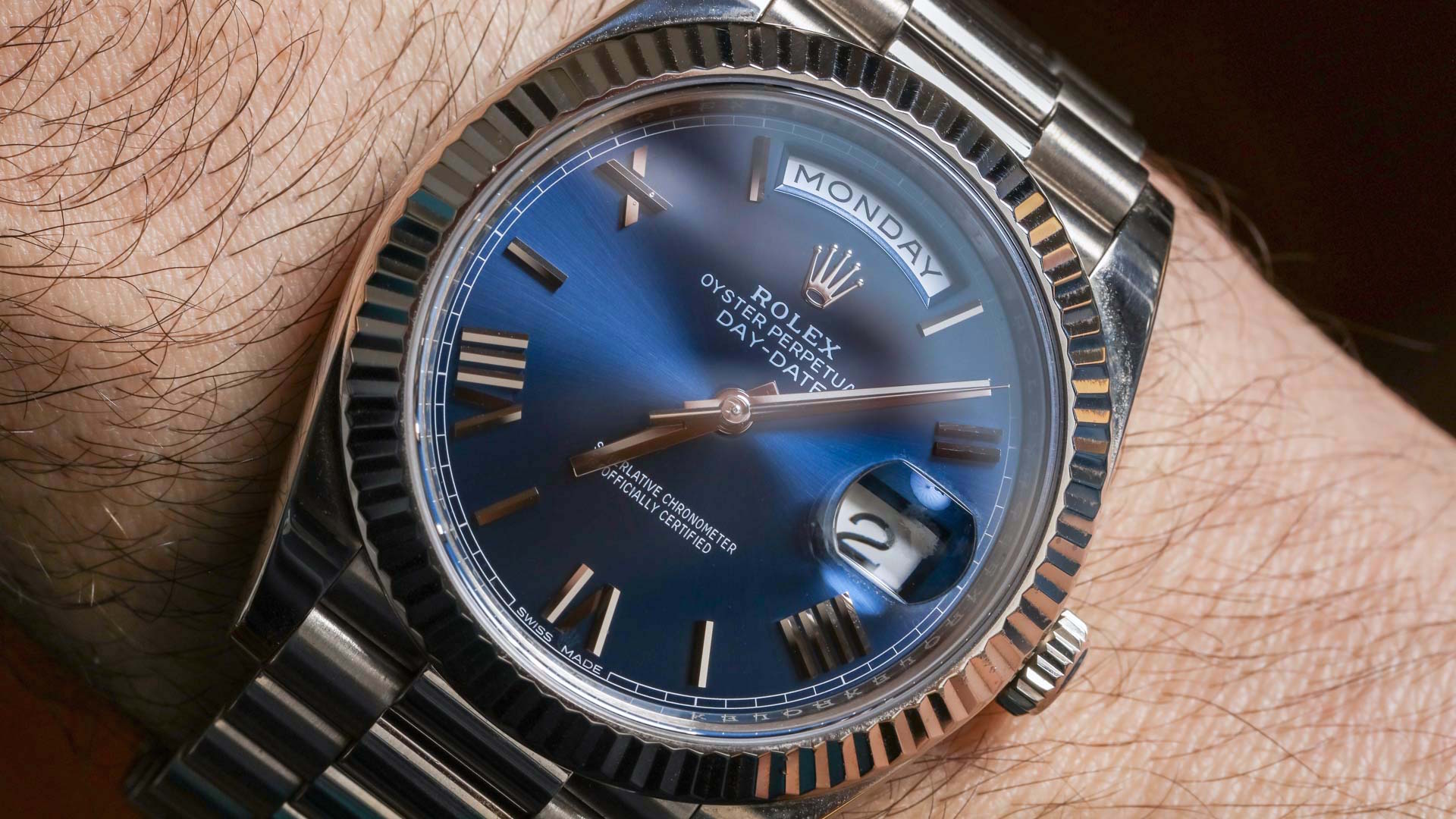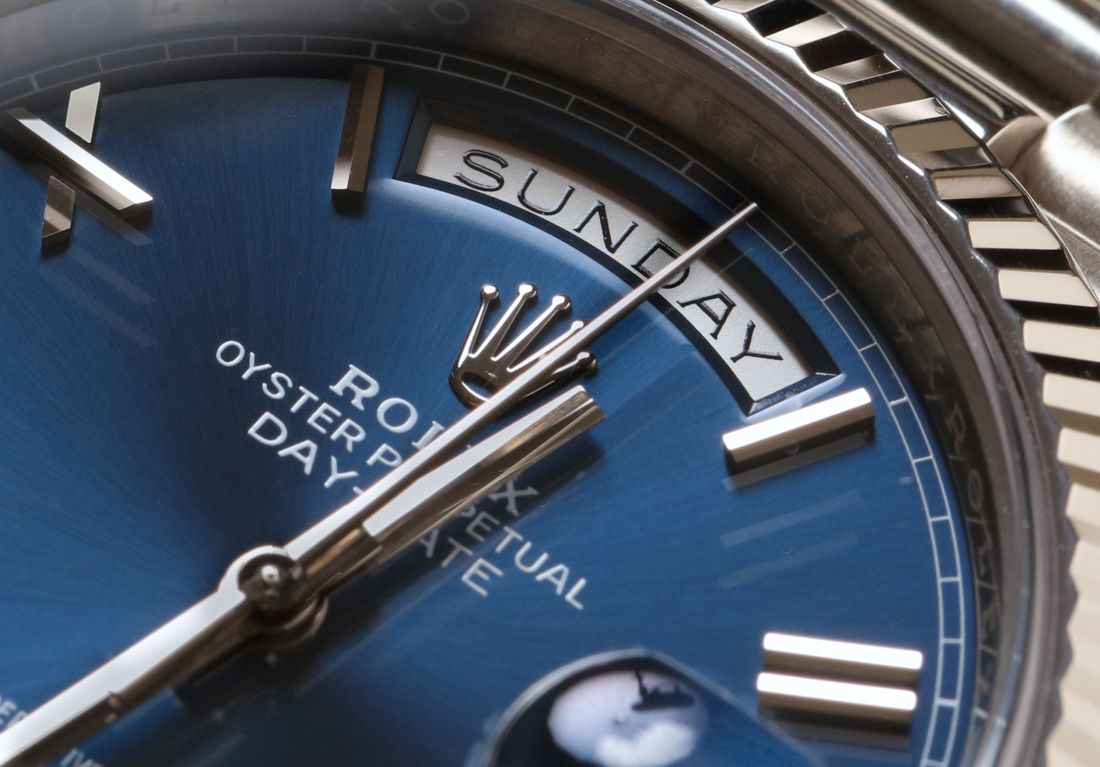
Since 1956 Rolex has been producing the Day-Date watch as their flagship men’s model. The most recent version of the Day-Date (also commonly referred to as the “Rolex President”) is the Rolex Day-Date 40 reference 22823X series that includes the 18ct yellow gold reference 228238, the 18ct Everose gold reference 228235, the 18ct white gold reference 228239, and the smooth bezel 950 platinum reference 228206. This aBlogtoWatch review is of the 18ct white gold Rolex Day-Date 40 reference 228239BLRP with the blue colored dial. In addition to the four precious metal case materials, Rolex offers a compelling range of dial color and style options, as well as versions of the Day-Date 40 with varying levels of precious stone decoration.
Early on in my career reviewing watches, I always found the Rolex President to be a challenging watch to categorize. That is because the Day-Date does not fit into any of the traditional categories of watches that we tend to think of. It isn’t simple and basic enough to be a traditional dress watch, it isn’t built for specific physical activities even though it has the resistance of many sport watches, and its design isn’t inspired by any specific items that might put it in the category of an art or “design” watch. Despite its iconic status and massive global popularity, what exactly is the Rolex Day-Date President?
I’ve come up with a two-part answer to that question and it is that the Rolex Day-Date is both the quintessential men’s jewelry watch, and the quintessential masculine gold watch. Each part of the Rolex President theme is about combining core horological utility with a status-communicating showiness that isn’t meant to be particularly brash or assertive. Rolex seemed to hit on a design that said “look at me” without saying “look too closely.” The outcome is a product that clearly says “I have money and at least recognize good taste, but I’m also concerned about long-term value and functionality.”
For a long time the Rolex Day-Date and Datejust rode a similar path along side one another as appealing to very similar demographics. You can read my long-term review on the Rolex Datejust 41 watch here. The Datejust is less expensive, not currently produced in all precious metal, and has a slightly more simple movement. What originally made the Day-Date standout from the Datejust was the inclusion of a day of the week indicator – with the day fully spelled out at the 12 o’clock hour position. My understanding is that this feature was originally intended for active business people (men) who found it useful to not only know the date but the current day of the week. This was especially important for people who had reoccurring obligations and would be regularly (and clearly) reminded of what day of the week it was.
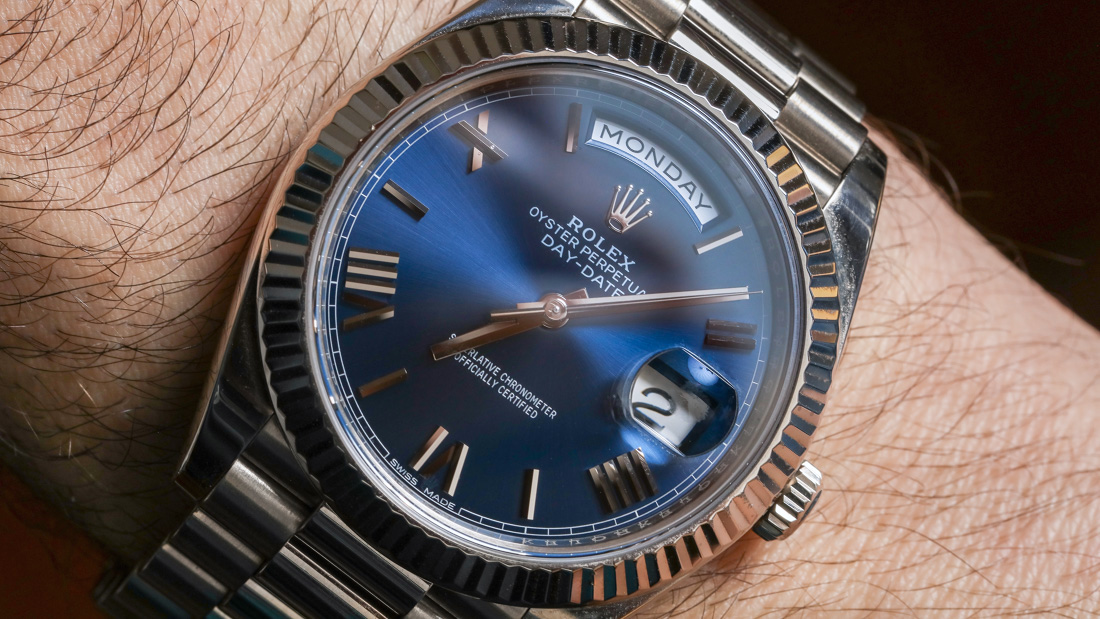
Over the years the importance of having the day and date on your wrist diminished – especially as technology put the date and calendar information everywhere. Still, Rolex is a “heritage” company and continued to produce the Day-Date out of both habit and obligation to keep this important family of watches lively and relevant for luxury watch consumers around the world. The 1980s and 1990s were an important time for Rolex and the Day-Date President (as well as Datejust), as the brand experienced a high-point in its watches because they were used by people to communicate not just status but also success.

The Day-Date watch earned the nickname “President,” which is what it is often referred to. This originated from the fact that several United States Presidents (among other world leaders) wore Rolex Day-Date watches. One source refers to an actual Rolex advertisement from 1966 where Rolex itself describes the Day-Date as “The President’s Watch.” At the time, US President Lyndon B. Johnson wore a Day-Date, and prior to that so did President Dwight Eisenhower. Our colleague and Rolex historian Jake Ehrlich discusses the “Presidential history” of Rolex and the Day-Date watch here.
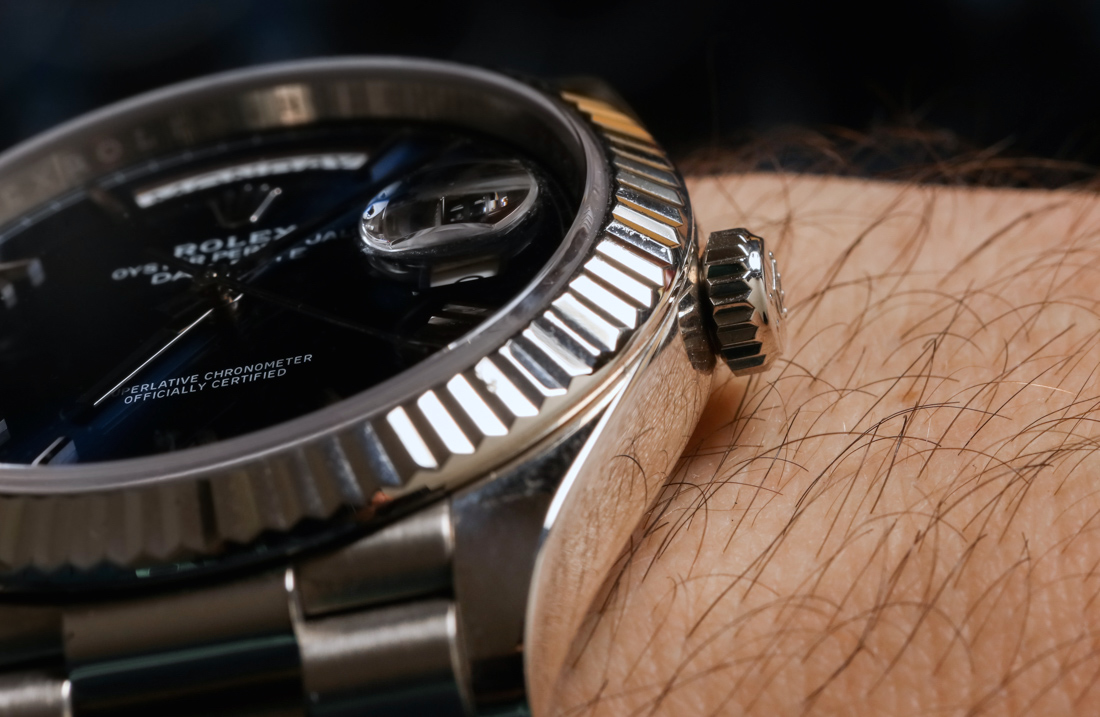
From the start the Rolex Day-Date was meant to be a successful merger between a functional sport-style watch and a prestigious men’s status item. Use of the Oyster case was a part of that – as well as Rolex’s famously dependable mechanical movement. What really benefits the Rolex Day-Date isn’t the fact that Rolex has been producing it since 1956, but rather that Rolex has continued to improve upon it since 1956. It goes without saying that the latest generation Day-Date 40 is the best Rolex has ever produced.
For a long time the Day-Date was a 36mm wide watch until Rolex introduced the 41mm wide Day-Date II. This model wasn’t as refined/proportioned as a Rolex watch might otherwise be, so Rolex decided to release the current model being the Day-Date 40. Introduced in this generation of models is a slew of important changes, quality upgrades, as well as the introduction of Rolex’s most modern generation of in-house movements being the calibre 32XX series. Specifically, the Day-Date contains the Rolex calibre 3255 automatic “Superlative Chronometer” movement. Accurate to plus or minus two seconds per day, the movement is given both COSC Chronometer certification and tested in-house by Rolex to meet additional quality and performance standards.
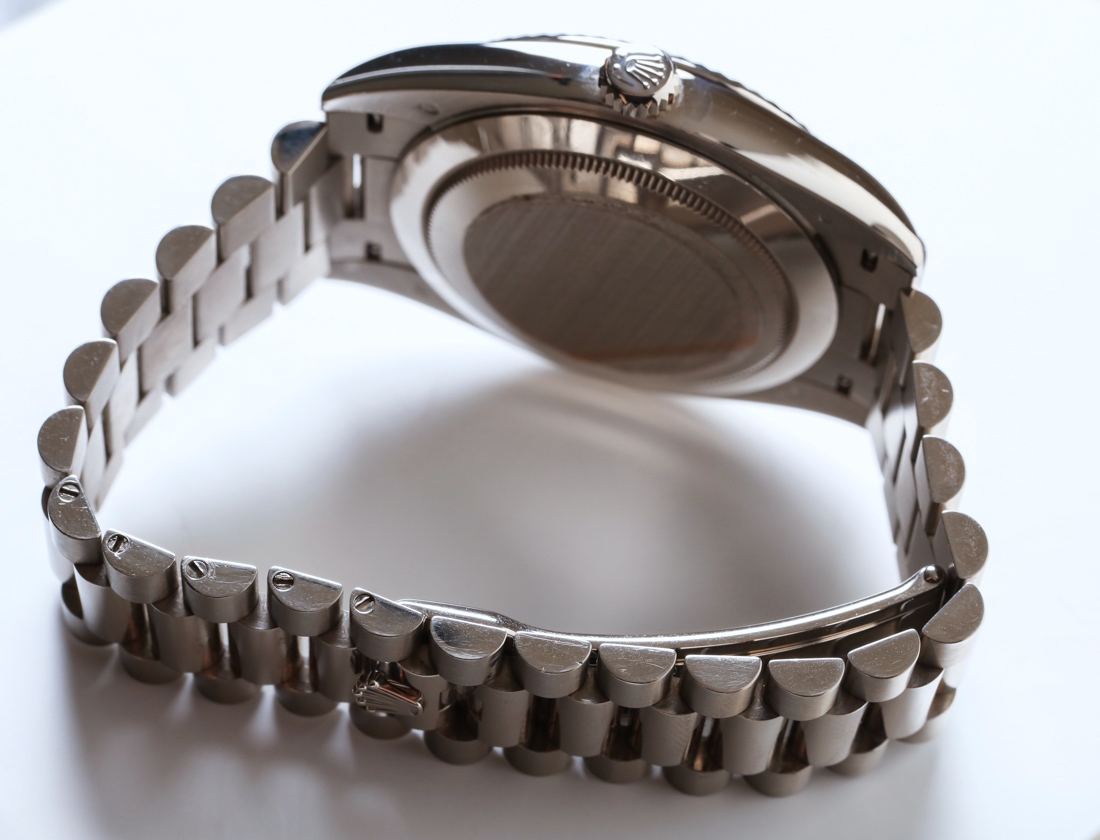
The movement might not be the prettiest in the world (hidden by a screw-down caseback), but it is very well made. Operating at 4Hz, the 3255 has three days of power reserve and I found it to be extremely reliable. Complications include the time with central seconds, the date, and of course the day of the week window with the fully spelled out day. Both of the calendar discs instantly jump to their new position when the date changes at midnight. If you wanted to go up to a fancier luxury watch, then you might be getting more complication and more hand-decoration on the movement – but you really can’t find better performance than a Rolex 3255 (or other 32XX series) mechanical movement.

